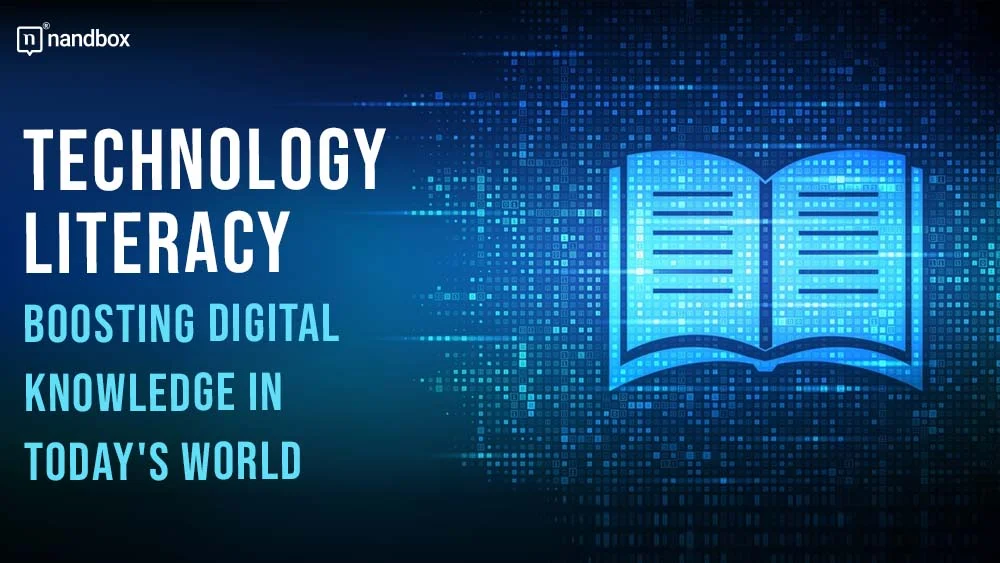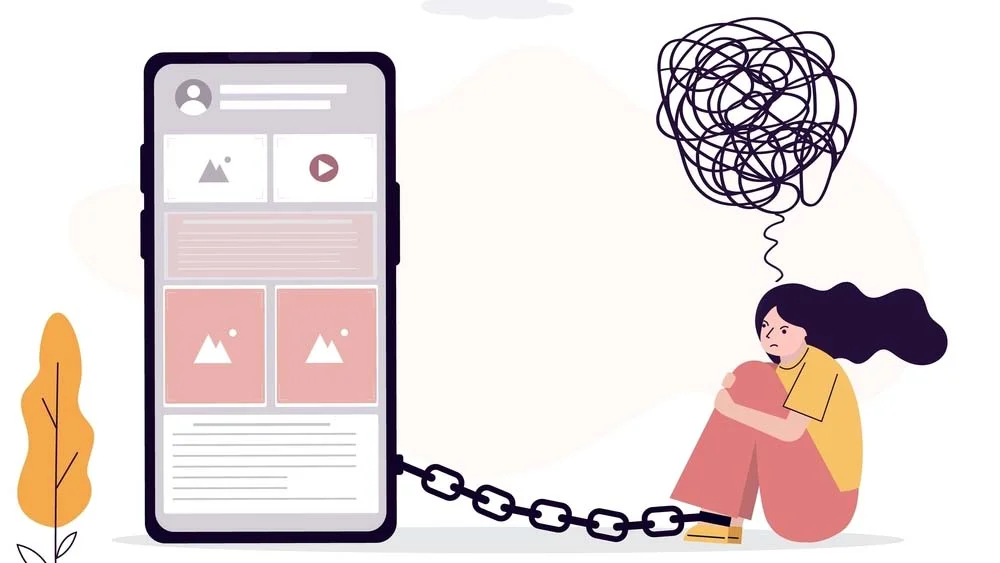The tech world and landscape are moving at such an unattainable rate that some people associated with the industry can’t even adapt to all the trends and emerging technologies. While some can’t just adapt, others aren’t familiar with anything that is currently going on in this ever-evolving industry. This unfamiliarity can be a burden to anyone, especially when the world around you requires full or even partial knowledge of these technologies or tools. And that is why the term technology literacy emerged. Eager to know more? Read this article to learn all about technology literacy, its benefits and drawbacks, and how we can encourage it.
What is Technology Literacy?
Literacy is always associated with positive things. To be literate has the special force of holding and possessing the power of knowledge and skills. But we are not always literate about everything in life, especially new things. For instance, the older generation has no idea what an iPad does, while the younger generation has no idea what a cassette means. This kind of illiteracy can be disregarded. However, it can’t be in some cases. One of the cases where illiteracy can’t be disregarded is tech illiteracy. And that is why there has been a major and great movement to encourage technology literacy. But what exactly is tech literacy?
Logically, you’d think that technology literacy means being knowledgeable about technologies and practices. This is completely right, in a sense. However, there is still more to the term. Technology literacy is the capability of using, being aware of, and interacting with emerging technology in an efficient way. Technology literacy emphasizes the use of technology to solve problems and be productive. Additionally, it also emphasizes being able to control and adapt to technology-driven environments. Not only awareness and usage are the purposes of technology literacy, but safe and responsible usage is also a main priority of this movement. The tech literacy movement really focuses on promoting the secure usage of new technologies that could yield useful and effective results.
The Reasons Behind The Widespread of Technology Illiteracy
Rapid Technological Advancements
Some people may find the rapidity with which technology is changing too much to handle. Those who can’t keep up with the pace of change risk falling behind the technological curve and becoming technologically illiterate.
Limited Access to Technology
Technology illiteracy can be caused by social and economic factors such as a lack of access to computers and the internet, particularly in underprivileged communities. It can be difficult for people to learn how to use computers, the internet, and other modern technologies if they do not have access to these tools.
Overwhelming Complexity
Some technologies and applications have complicated user interfaces that are difficult to grasp. Complex procedures have the potential to confuse and frustrate individuals, who may then choose to avoid them.
Digital Exclusion
When websites, apps, or devices are not designed with people with disabilities in mind, they can create a barrier to entry. This can result in social isolation and a lack of technological proficiency.
Language Barriers
When websites, apps, or devices are not designed with people with disabilities in mind, they can create a barrier to entry. This can result in social isolation and a lack of technological literacy.
The Importance and Benefits of Technology Literacy for Individuals
Efficient Learning
Knowing how to use modern technological tools opens up a world of opportunities for furthering one’s education. From webinars and digital libraries to online courseware and interactive tutorials, learning is thereby made more adaptable, accessible, and practical.
Platforms like Contrast provide specialized webinars for modern software companies, offering targeted professional development that helps technology workers stay current with rapidly evolving industry standards and practices.
Effective Communication
Today, technology is integral to successful communication. Possessing a high level of technological literacy facilitates interaction via electronic means such as email, social media, video conferencing, and so on.
Access to Information
With the right tech skills, anyone can gain access to the world’s knowledge. This grants them the ability to investigate and acquire knowledge on a wide range of matters, from current events and health to hobbies and interests.
Convenience and Productivity
Individuals who are familiar with technology can use a variety of programs and applications. This can improve their efficiency at work and in their personal lives significantly, unlike people who are not familiar with any of the current technologies.
Personal Development
Literacy in the use of technology is beneficial to one’s growth because it opens doors to new ways of learning, of expressing one’s individuality, and of exploring one’s passions and interests.
Entrepreneurship
A working knowledge of modern technologies is mandatory for any aspiring entrepreneur. In this way, individuals can create and run their own virtual enterprises, including e-commerce websites and technology start-ups.
The Role of Tech Democratization in Technology Literacy
It is a well-known fact that the democratization of technology had a groundbreaking impact on the industry. Democratization is the process of making all tools, resources, and documentation regarding emerging technologies available to everyone. This process always aims for broad and inclusive use of all technologies. In addition, it emphasizes teaching and making people aware of all the latest processes and trends in the industry. For these reasons and many more, the correlation between democratization and technology literacy is very powerful and direct, as the implementation of one will impact the other and vice versa. The great movement of democratization increases the rates of technology literacy and makes the current technology-driven world more adaptable and bearable.
Drawbacks of Technology Literacy
Privacy Concerns
With increasing familiarity with technology comes an increased responsibility for protecting one’s personal information. Sharing personal information is a common consequence of technological use, and users may fail to take necessary precautions if they lack the necessary knowledge.
Digital Addiction
When people spend too much time on their phones, computers, and other digital devices, they risk developing a dependency on them. This can have serious consequences for their well-being, their interactions, and their ability to get things done.
Misinformation

While the internet has greatly expanded people’s access to information, it has also made it simpler to spread false facts and employ various propaganda techniques to influence public opinion. Those who are tech-literate should exercise their critical thinking skills to determine the reliability of online content.
Reduced Face-to-Face Interaction
In some cases, increased reliance on technology for communication and entertainment can lead to fewer opportunities for face-to-face interactions. Which are crucial for the development of social intelligence and the maintenance of interpersonal bonds.
Environmental Impact
Increased energy use, electronic waste, and carbon emissions related to data centers and device manufacturing are just a few ways in which the advancement of technology can have unintended negative consequences for the environment.
After we have discussed the drawbacks of technology literacy, let us establish a very important fact. As much as the drawbacks appear to be very serious, they are also easy to resolve. The direction that the tech industry is shifting toward makes technology literacy a must for all individuals. This is because, soon enough, technology will take over every part and aspect of our lives. And that is why each drawback here on the list has a solution. For instance, the environmental impact that technology can produce can easily be reversed. This is done by using green tech practices such as green software and app architectures and recycling e-waste.
How Did No-Code Development Impact the Technology Literacy Movement?
Now that we have discussed the drawbacks of technology literacy, let us demonstrate one of the technologies that had the biggest impact on it.
No-code development is one of tech democratization’s main players. The no-code movement achieves all the purposes and goals of tech democratization, and it achieves all the goals of technology literacy as well. The no-code movement aspires to raise awareness and enable all people to be a part of app development processes. No-code development is the process of developing an app using pre-installed features and elements and an intuitive drag-and-drop interface. Mo-code development platforms are very comprehensive, and not only do they make creating apps as easy as possible, but they also have everything a tech-savvy person would need. This includes making tools for building apps and resources available. One of the main parts of any no-code platform is documentation. The documentation part usually includes all the necessary information as well as an introduction to all the basic technologies and all the necessities that developers would need.
This not only makes the development and use of apps much more accessible, but it also educates people and emphasizes the suitable and proper use of technologies.
3 Best Ways To Encourage Technology Literacy
Join Online Tech and No-Code Communities
Online tech and no-code communities are always the way to start properly gaining knowledge. There are thousands of online communities for either technology in general or no-code specifically. These online communities contain a large number of tech enthusiasts as well as experts such as Reddit, Discord, Indie Hackers, and many more. Through these platforms, you can engage in discussions, share experiences and knowledge, and explore new technologies and tools.
Conferences Are Always the Way to Go
Conferences are another way that people can gain significant knowledge on different tech topics. Conferences take place frequently in different places around the world and thousands of people attend them each year. They include workshops, seminars, etc. Not only are these conferences considered to be a great aid for technology literacy, but they are also exceptional ways to explore new opportunities in the tech fields and network. Since communication and networking are the main elements of technology literature, they are an ideal option for all individuals.
Familiarize Yourself With Online Tools
The last way that could encourage tech literacy for individuals is through online platforms and tech tools. Thanks to technological advancements, there are tools covering all the technical aspects. This makes the process of exploring and becoming familiar with certain technologies, like AI for instance, easy and seamless. Through online tools, individuals can learn everything about the processes, mechanisms, and structure of advanced technology. They could also practice and gain programming and tech-related skills. As an example, the nandbox app builder is one of the platforms that makes exploring native no-code development as easy as pie. The platform includes an intuitive and engaging interface that makes the development process enjoyable. Additionally, the documentation on the platform explains everything clearly, not only with no code but with other topics like APIs.





